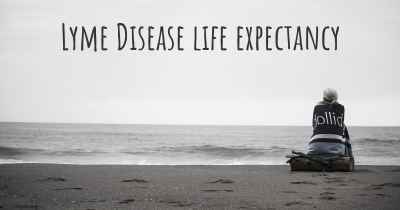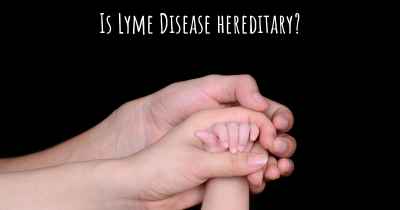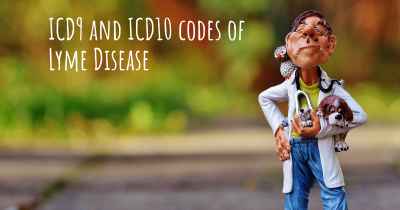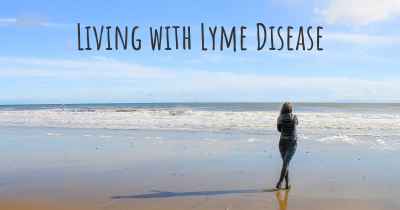Is it advisable to do exercise when affected by Lyme Disease? Which activities would you suggest and how intense should they be?
See if it is advisable for people with Lyme Disease to practice sports and which ones are the most recommended if you have Lyme Disease
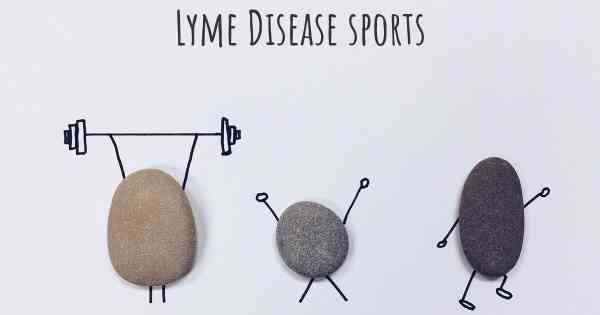
Is it advisable to do exercise when affected by Lyme Disease?
When it comes to Lyme Disease, it is important to approach exercise with caution. Lyme Disease is a bacterial infection transmitted through tick bites, and it can cause a wide range of symptoms including fatigue, joint pain, muscle aches, and cognitive difficulties. The severity of symptoms can vary from person to person, so it is crucial to listen to your body and consult with a healthcare professional before starting or continuing an exercise routine.
Benefits of Exercise
While it may seem counterintuitive, exercise can actually have several benefits for individuals with Lyme Disease. Regular physical activity can help improve cardiovascular health, boost mood, increase energy levels, and enhance overall well-being. Exercise can also help maintain muscle strength and flexibility, which can be particularly important for individuals experiencing joint pain or stiffness.
Choosing the Right Activities
When it comes to choosing the right activities, it is important to focus on low-impact exercises that do not put excessive strain on the joints. Here are some suggestions:
- Walking: Walking is a great low-impact exercise that can be easily modified to suit individual fitness levels. Start with shorter distances and gradually increase the duration and intensity as tolerated.
- Swimming: Swimming is another excellent option as it provides a full-body workout without putting stress on the joints. The buoyancy of water can also help alleviate joint pain and stiffness.
- Cycling: Cycling, whether outdoors or on a stationary bike, is a low-impact exercise that can help improve cardiovascular fitness and strengthen leg muscles.
- Yoga: Yoga can be beneficial for individuals with Lyme Disease as it focuses on gentle stretching, balance, and relaxation. It can help improve flexibility, reduce muscle tension, and promote mental well-being.
- Pilates: Pilates is a low-impact exercise that focuses on core strength, flexibility, and body awareness. It can help improve posture, balance, and overall muscle tone.
Exercise Intensity
The intensity of exercise should be tailored to each individual's capabilities and current health status. It is important to start slowly and gradually increase the intensity and duration of exercise over time. Pay attention to any symptoms or signs of fatigue, pain, or worsening of Lyme Disease symptoms during or after exercise. If any of these occur, it may be necessary to reduce the intensity or take a break.
Additional Considerations
While exercise can be beneficial, it is important to keep a few additional considerations in mind:
- Rest: Rest is crucial for individuals with Lyme Disease. Be sure to listen to your body and allow for adequate rest and recovery between exercise sessions.
- Hydration: Stay hydrated before, during, and after exercise to support overall health and well-being.
- Proper Nutrition: Maintain a balanced diet to provide your body with the necessary nutrients for energy and recovery.
- Consult with a Healthcare Professional: Before starting or modifying an exercise routine, it is important to consult with a healthcare professional who is familiar with your specific condition and can provide personalized guidance.
Conclusion
While exercise can have numerous benefits for individuals with Lyme Disease, it is crucial to approach it with caution and listen to your body. Choose low-impact activities, start slowly, and gradually increase intensity as tolerated. Always consult with a healthcare professional for personalized advice and guidance. Remember, everyone's experience with Lyme Disease is unique, so what works for one person may not work for another.
Posted Feb 26, 2017 by Suzy 850
Posted May 9, 2017 by Lynn 1000
Posted May 11, 2017 by Susan 1270
Posted May 12, 2017 by Lorraine 1001
Do not go over your limits, if it doesn't feel good.
Hiking, yoga are good activities. If you can do more, it's also possible (if you don't get pain or feeling sick after or while the activity)
Posted Jul 19, 2017 by A 800
Posted Aug 16, 2017 by Deanna 2150
Posted Aug 29, 2017 by missy 2050
Posted Aug 30, 2017 by Alex 600
Posted Aug 30, 2017 by S. Guthrie 2000
Posted Aug 31, 2017 by Susan 800
Posted Sep 12, 2017 by Sheri 1100
Posted Sep 29, 2017 by Sarah 2550
Posted Sep 29, 2017 by Katrina 2000
Posted Oct 1, 2017 by Sonya 2000
Posted Oct 9, 2017 by Jessie 1600
Posted Oct 25, 2017 by Andrea 2120
Posted Mar 9, 2018 by Niki 8100
Posted Mar 14, 2018 by Nikolettie 2700
Posted May 26, 2018 by Bethany Wing 2100
Posted Feb 1, 2020 by Lori 2550
Posted Dec 16, 2021 by José 7770
Posted Feb 26, 2017 by Achita 1050
The bacteria likes the coverings of the tendons and neurons, so while not control, there may be lessons more serious.
Already in treatment, the exercise is good for the immune system.
Posted Feb 28, 2017 by Leva Méndez 3122
swimming
bike
Posted Mar 6, 2017 by laurence 1000
Posted Mar 23, 2017 by Fátima Marrero campos 1264
Posted Apr 29, 2017 by Andrea Díaz 850
Posted Aug 23, 2017 by Cecilia 2263
Posted Sep 12, 2017 by N6 2550
Posted Sep 13, 2017 by mora de La Plata 1500
Posted Sep 15, 2017 by Emiliano Ignacio Rodriguez 2500
Severity of disease
And their limitations
Posted Sep 27, 2017 by Amparochiqui 2000
Posted Oct 1, 2017 by Marie-Pierre 1000
A Minimum of 30' per day
Sport to listen to his body
Posted Oct 1, 2017 by Linda 1000
The "gym" the soft (tai Chi, Qi quong, yoga) are also effective.
It is paradoxical but moving helps to be less tired and have less evil.
Meditation is also a good remedy for the moral.
Posted Oct 2, 2017 by Aurore 1000
Posted Oct 2, 2017 by Yas 1000
(Must be performed in the order as the capacity of the patient to permit him to do so) :
PHYSICAL THERAPY (if needed) : 1. Here, the role of physical therapy is to prepare the patient for the planned program which will include preferably the physical exercises described below.
2. Relieve the pain and muscle contractions by using the multiple means available, namely : massage, heat, ultrasound, and a range of motion both passive and active. Do not use ice and electrical stimulation unless our office has specifically prescribed. Paraffin bath can be quite useful.
3. Increase mobility, the impetus and strength while protecting damaged joints and weakened, the tendons, ligaments, and teach these techniques to the patient. Use a light weight to a minimum resistance but repeat often the exercises prescribed. Exercises aerobics are not allowed. Allow the patient to progressively realize the gymnastics program described below.
4. Please receive the patient two days per week, but divide these two days in the week ! The EXERCISE will begin with a coach for private management and education careful.
INSTRUCTION AND MANAGEMENT OF PATIENTS
(Instruction will be provided during the initial interview, and repeated each session) : 1. Counsel patients on lesbonnes techniques for performing exercises without omitting the warm-up proper, breathing, joint protection, proper body positioning during exercise and the release and muscle stretching. 2. Please work only one muscle group at a time and do major stretching extended the muscle group worked immediately after each set of exercises before moving on to the category of exercises following. 3. It will lend itself to a serious maintenance at the beginning of each session to report the good and bad effects are felt from the first session, and adjust the therapy according.
PROGRAM
1. Aerobic exercises are not allowed, not even those with mild effects, until improvement of the force.
2. Refurbishment : work to improve your strength and to break the disruptive effects caused by Lyme disease. This is done through exercises applied to the whole body. These exercises include calisthenics* as well as a strength workout, work consisting of repeated movements with the use of light weights. This technique may be carried out during exercises Stretch and Tone*, " "Body Sculpt*", with or without weight machines or using free weights properly used.
3. Each session will last an hour. If the patient can't sustain the effort all the time, change the program to decrease the intensity.
4. The exercises should never be more intense from one day to the other. The patient will be able to start by exercise every 4 or 5 days at the beginning, and as its capabilities increase, he will be able to train more often, but NEVER two consecutive days. Days without sessions should be devoted to rest.
5. This program of rehabilitation of the whole body is required to recover health. It is unacceptable to simply place the patient on a treadmill or an exercise bike (except briefly, as part of the warm-up), a simple work of walking is not valabe not more.
Posted Nov 18, 2017 by Aniok 100
